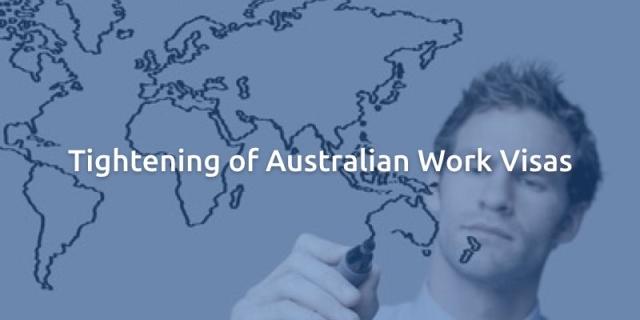Companies looking to employ overseas talent as part of an international expansion plan are facing growing uncertainty. This uncertainty is due to a recent trend in changing immigration policies. This trend is apparent with recent announcements made regarding the H-1B lottery in the U.S., Australian work visas and New Zealand immigration, all within 36 hours of each other. More countries are changing policies to better favor employment of local citizens and restrict foreign work visas. Because of this, it is more important for businesses to remain well-versed in all changes and updates to foreign labor laws.
Possible changes to H-1B lottery in the US
On April 17, 2017, the U.S. Citizenship and Immigration Services (“USCIS”) provided an update that they received a total of 199,000 H-1B petitions for Fiscal Year 2018. They conducted the necessary random lottery selection on April 11 to first meet the 20,000 cap for advanced degrees and then the 65,000 cap for general petitions. On April 18, President Trump signed an executive order to rein in the H-1B visa program. His goal is to switch away from a random lottery system toward one that favors higher-skilled, higher-paid foreign workers that have been educated in the U.S.
Abolishment of 457 work visa in Australia
On the same day, the Australian Government announced abolishment of the Temporary Work (Skilled) visa (subclass 457 visa). However, a new Temporary Skill Shortage (TSS) visa will replace the 457 visa in March 2018. This will give Australians priority to Australian jobs. Meanwhile, for those looking to acquire Australia work visas, here are key changes to pay attention to:
- Length of stay: The TSS visa program will shorten the current four years validity of the 457 visa. As a result, foreign workers are allowed to stay for only up to two years under a standard Short-Term stream, and up to four years for a Medium-Term stream, with higher skills and English requirements.
- Condensed list of eligible occupations: The government removed 216 occupations from the list for a 457 visa - from 651 down to 435. In addition, they put caveats in place for a further 59 occupations.
- Salary, language, character, work experience and labor testing requirements: The government will mandate a minimum market salary rate with a higher standard of English and clear police record, as well as a minimum of two years’ work experience, plus labor market testing.
- Changed pathway to permanent residency: There is no pathway for Short-Term stream and the pathway for Medium-Term stream is after three years.
- Higher cost to employers: There will be a fee increase, with the short-term visa costing AUD 1,150 per application and the four-year visa priced at AUD 2,400. In addition, employers are required to contribute towards training Australian workers.
These changes do not affect current 457 visa holders. However, pending 457 Australian work visas are immediately subjected to scrutiny of the reduced list of allowed occupations.
Kiwis-first immigration approach in New Zealand
Meanwhile, on April 19 the New Zealand Government announced a package of changes. These changes are “designed to better manage immigration and improve the labor market contribution of temporary and permanent migration.”
Highlights of changes to Skilled Migrant Category (SMC)
- Points are awarded based on an assessment of skilled work experience, with more recognition of skill levels in the 30-39 age group and high salary levels.
- There will be two remuneration thresholds – NZ$48,859 a year (New Zealand median income) for skilled jobs, and NZ$73,299 a year (1.5 times the median income) for jobs that are not considered skilled but are well paid. These thresholds will be updated annually.
- Bonus points are awarded for remuneration at or above NZ$97,718 per year.
- Changes will come into effect on August 14, 2017.
Highlights of changes to Essential Skills visa
- Under the Skilled Migrant Category, the same two remuneration thresholds will be introduced to determine the skill level of an Essential Skills visa holder.
- A new maximum duration of three years for lower-skilled Essential Skills visa holders. After this time, there is a minimum stand down period before they can apply for another lower-skilled Essential Skills visa.
- Lower skilled Essential Skills workers will not be able to bring their family through their work visa. Parents and children may enter New Zealand as a visitor but will only gain a work or student visa based on their own merits.
How do you navigate the ever-changing immigration landscape and not lose foreign talent?
Take advantage of the expertise available through the Velocity Global team. We provide up-to-date advice and guidance on the necessary steps to take for potentially affected employees. In addition, we guide you through possible alternatives that our International PEO solution offers.
Whether it is to assist you in keeping an employee who may have missed the H-1B lottery, or relocating another due to the unavailability of a work visa, we'll provide the right solution for you.



